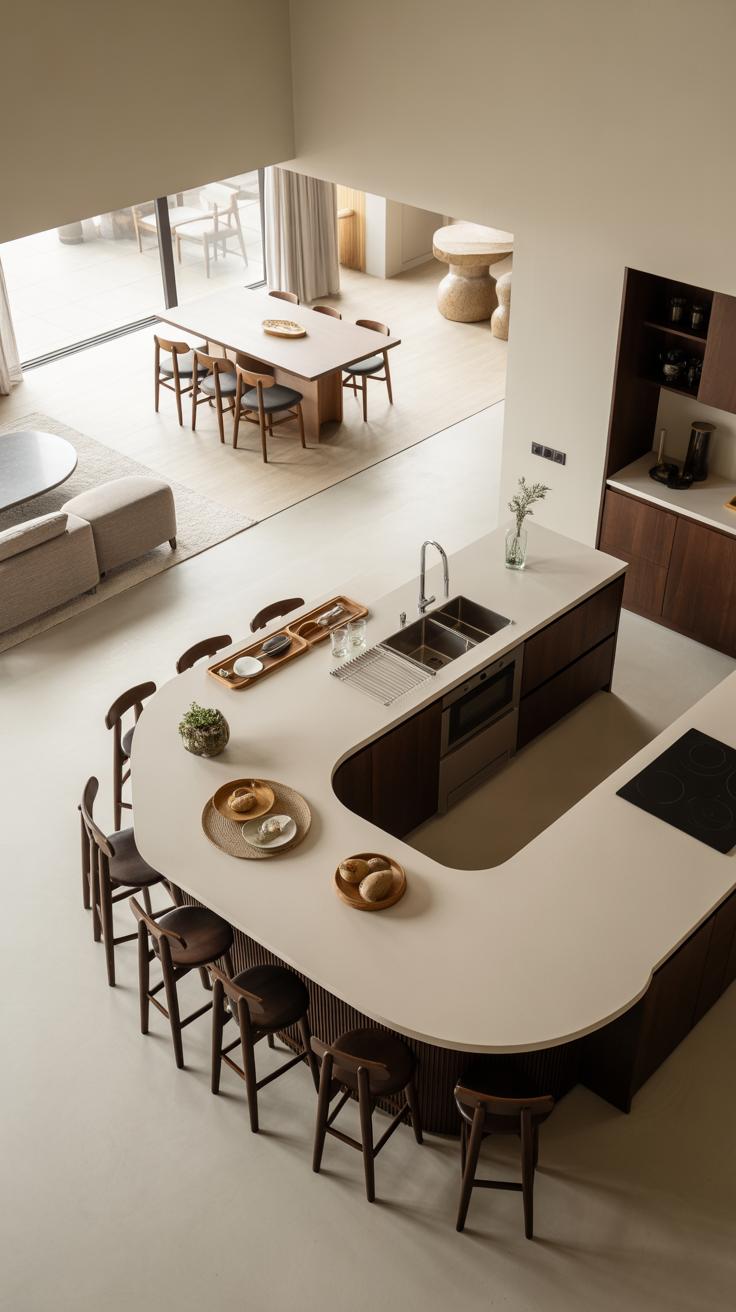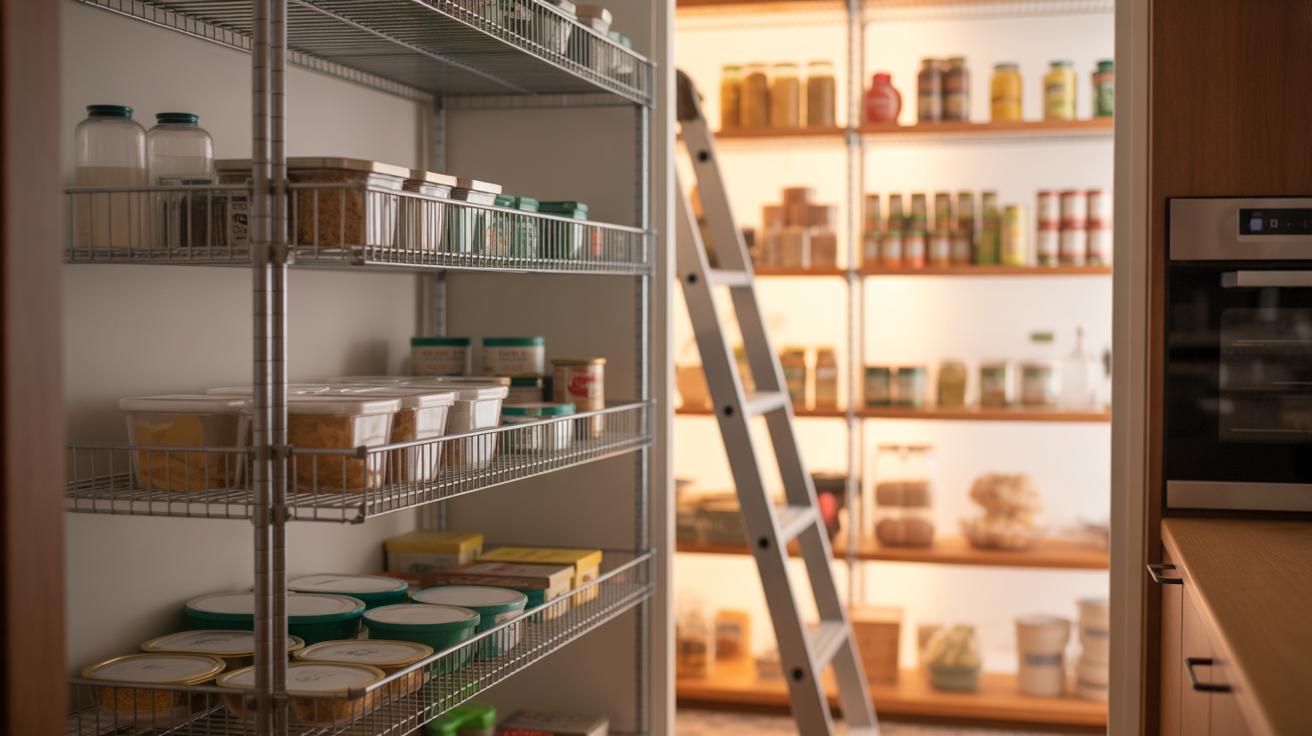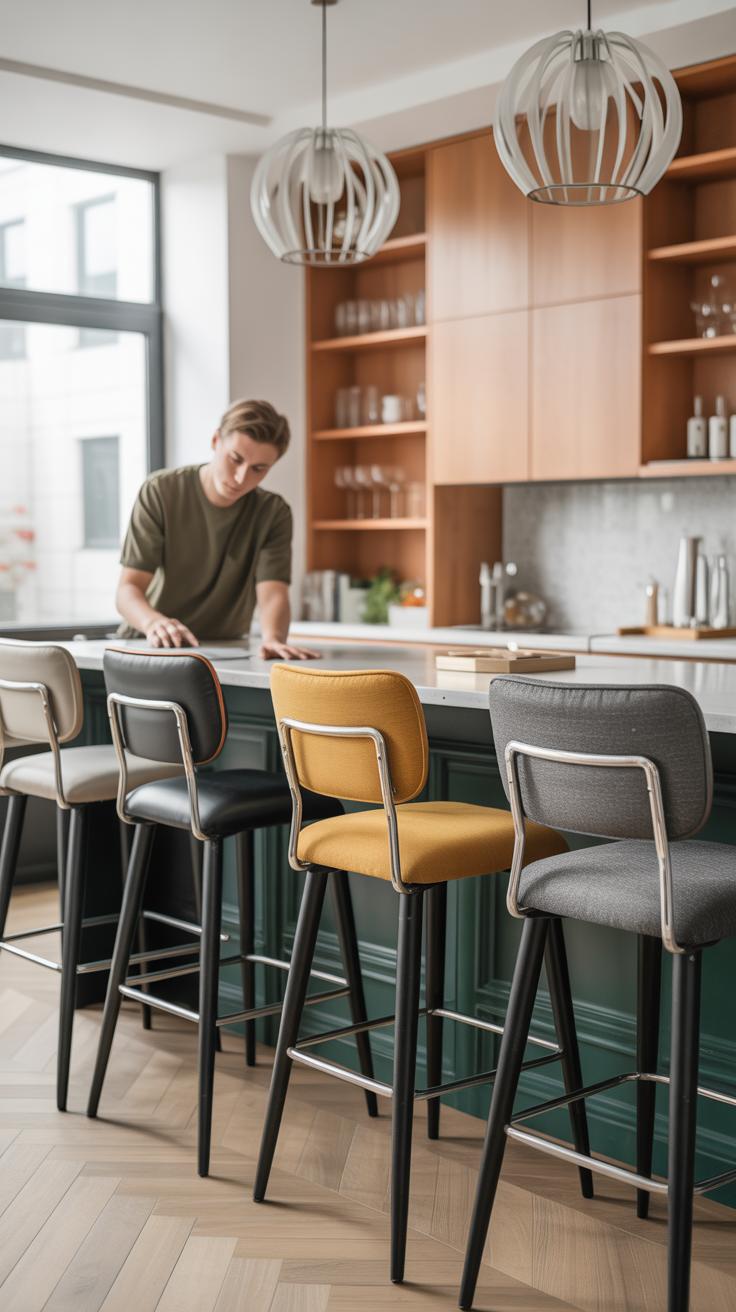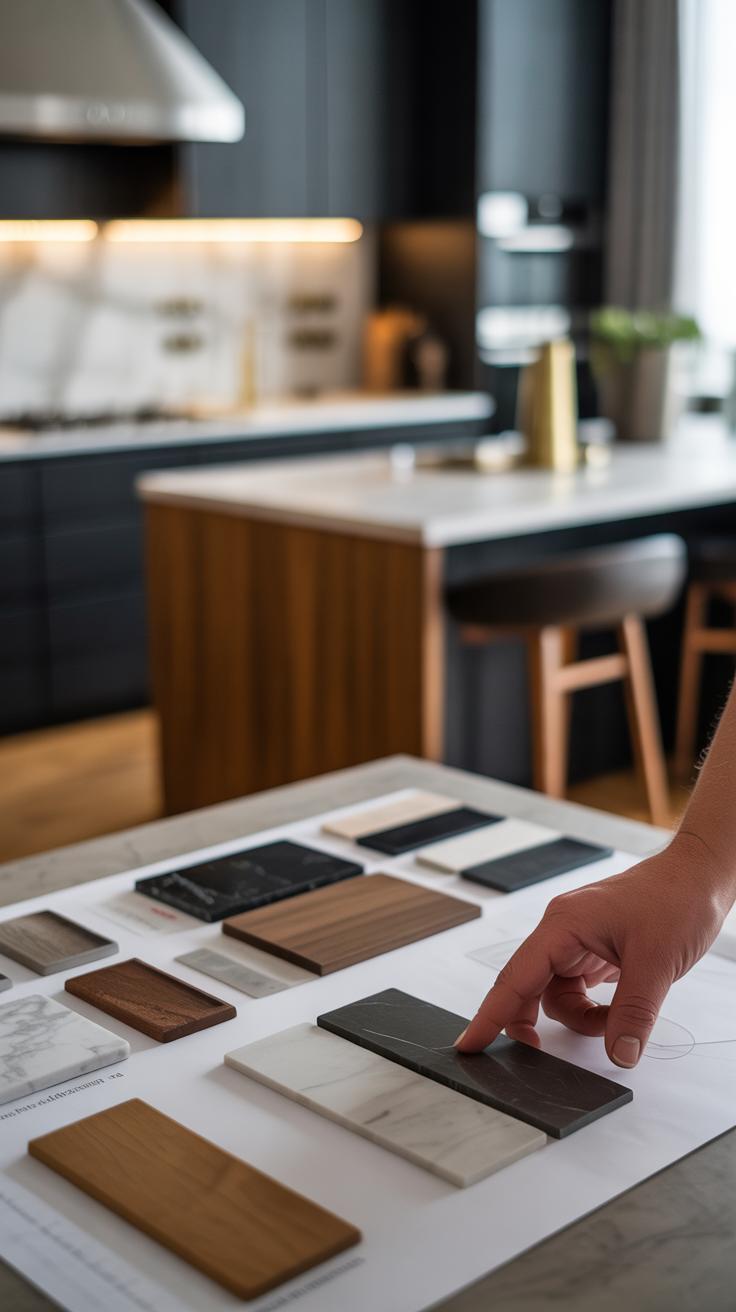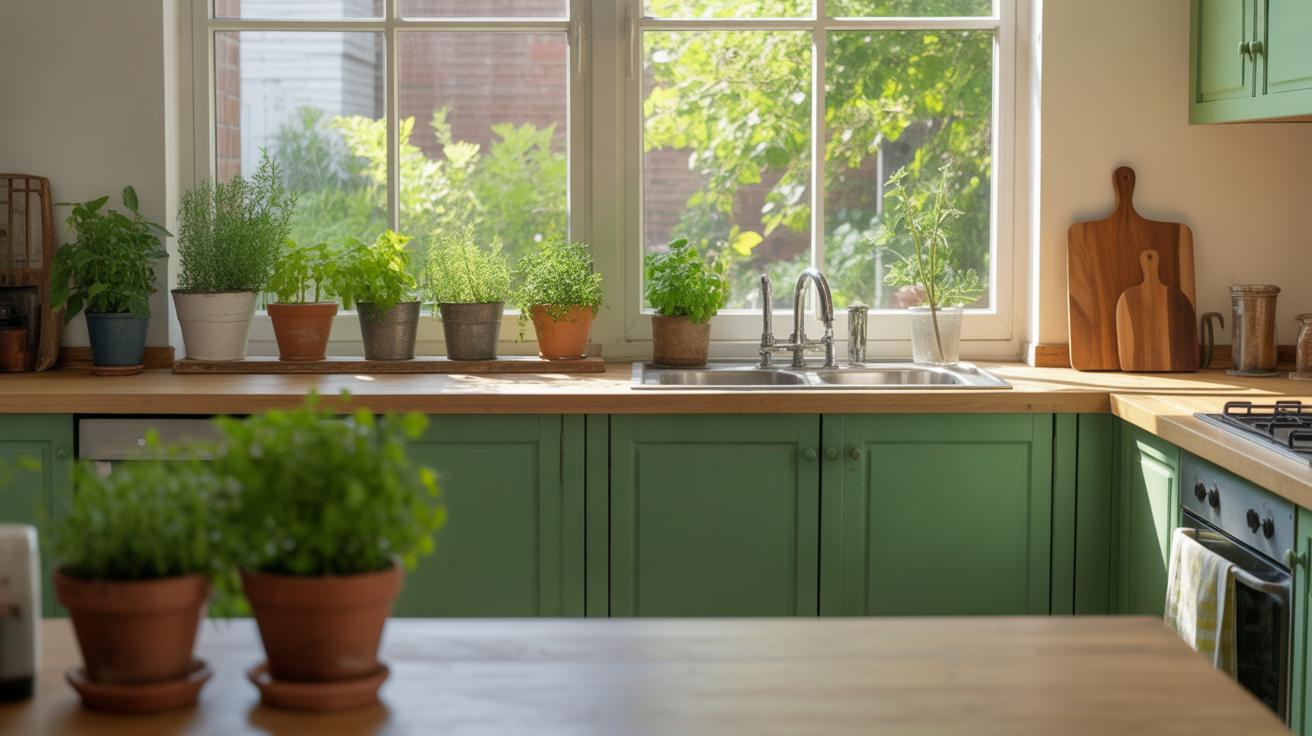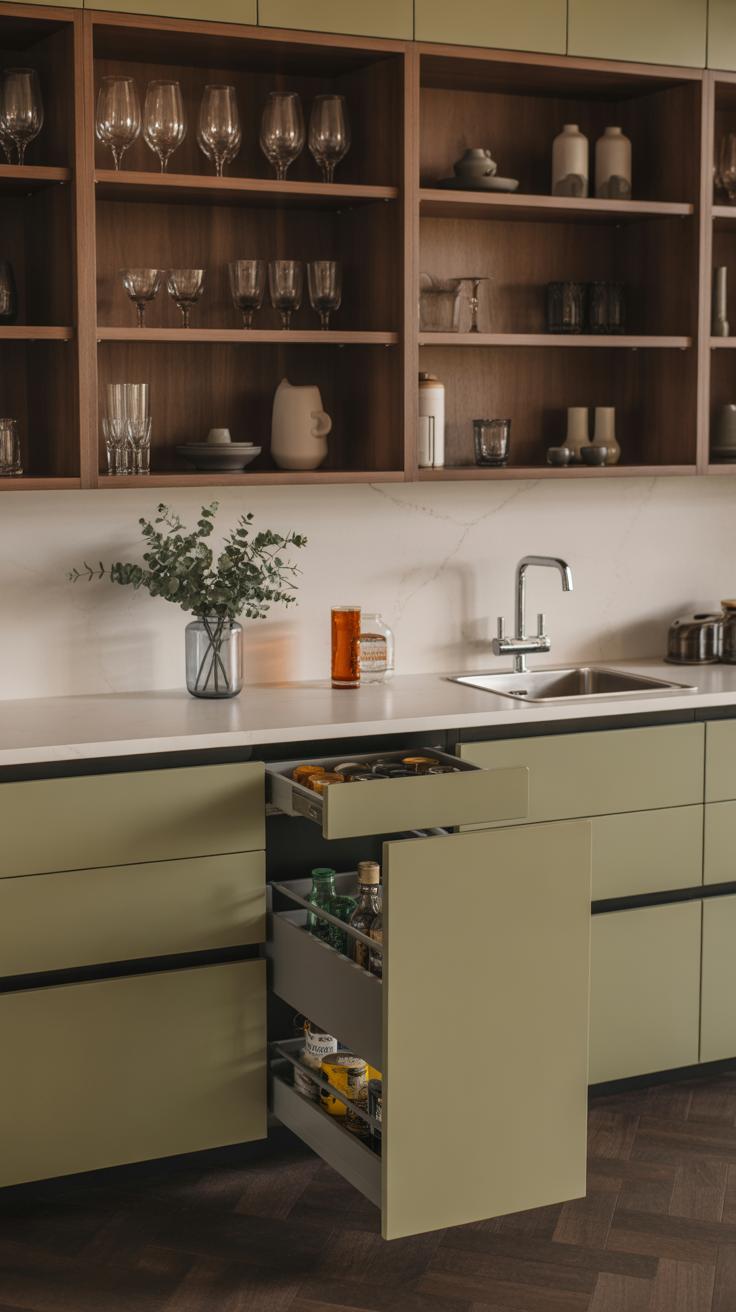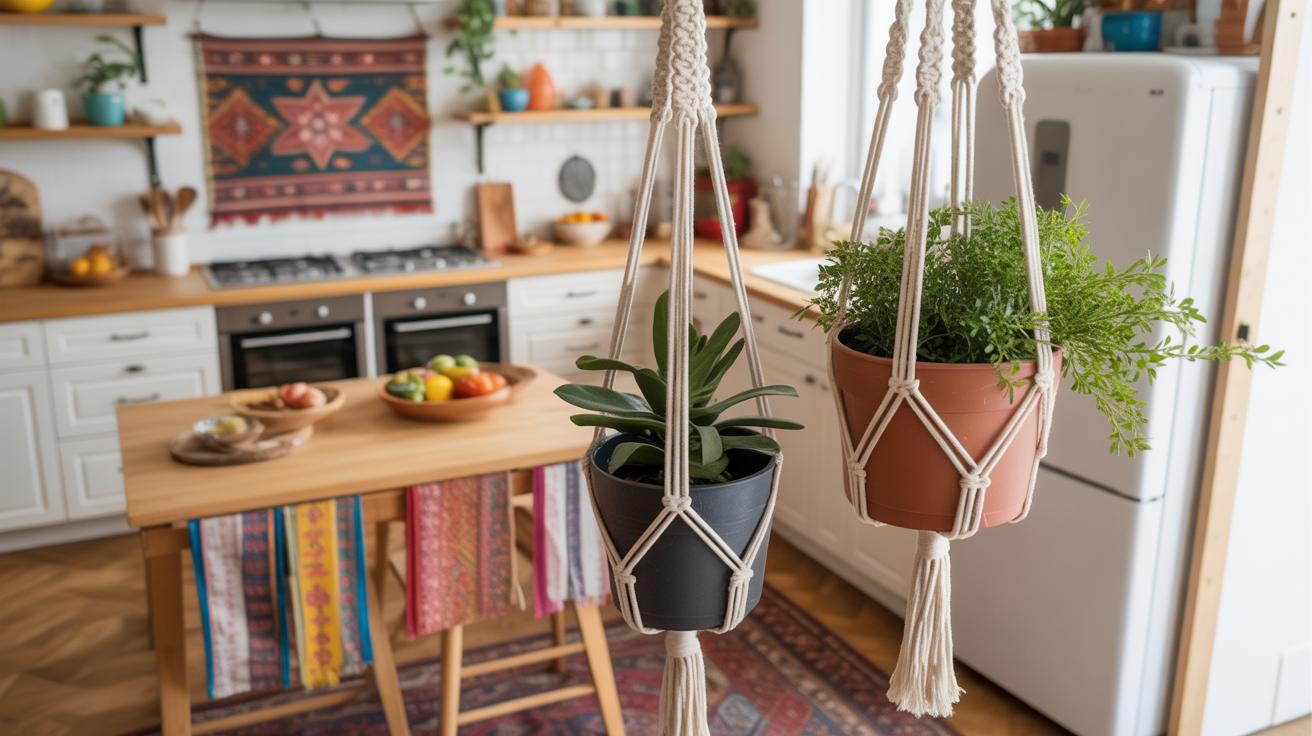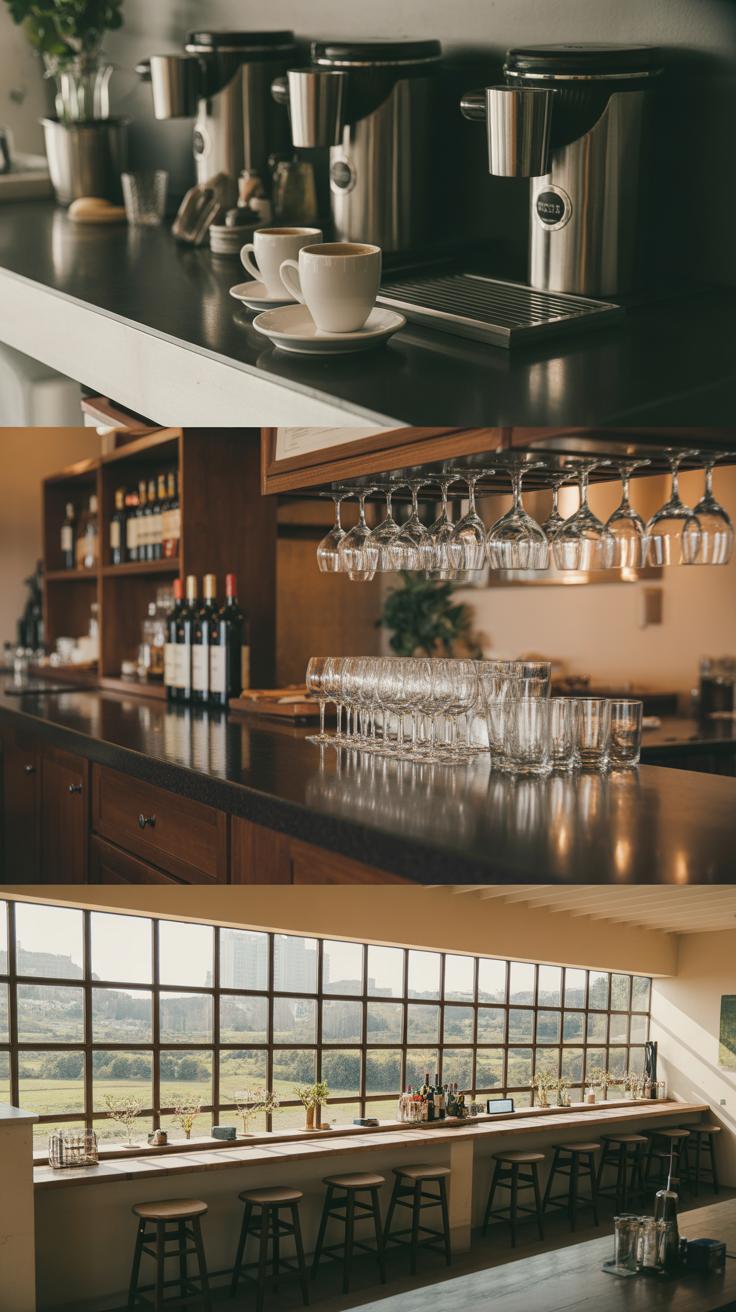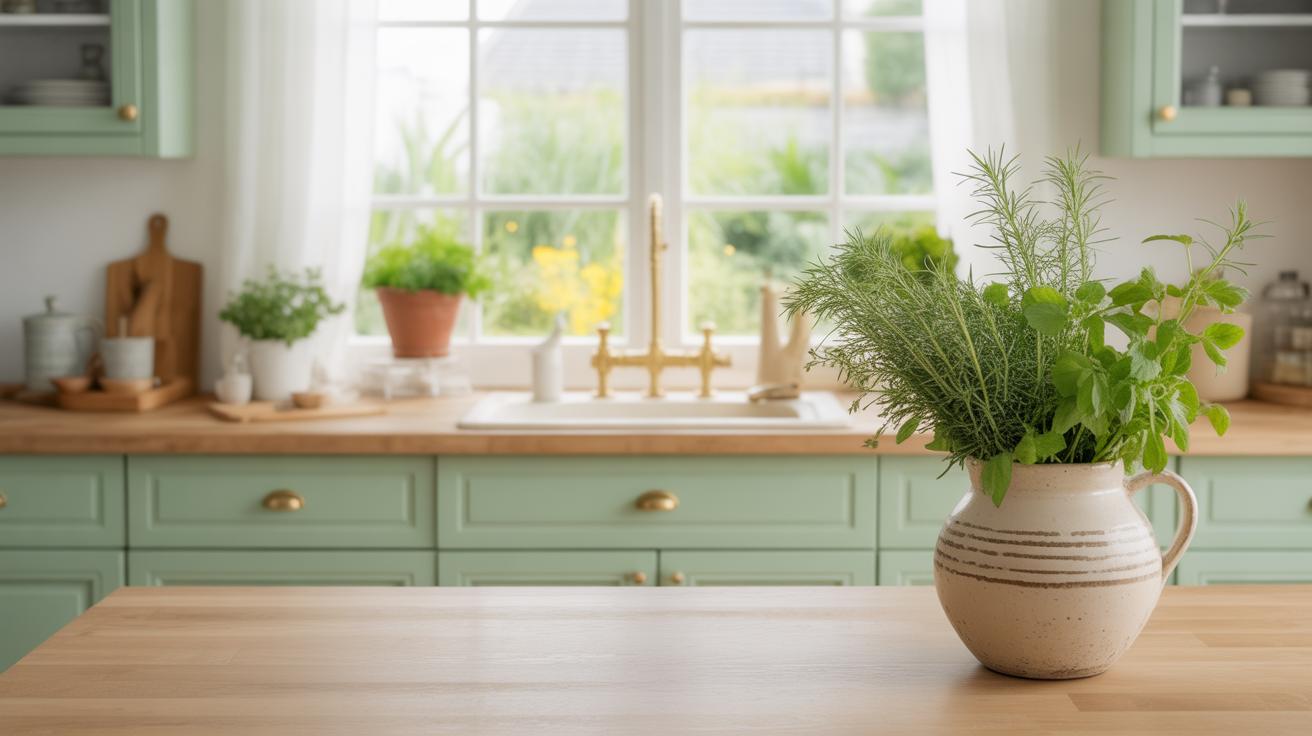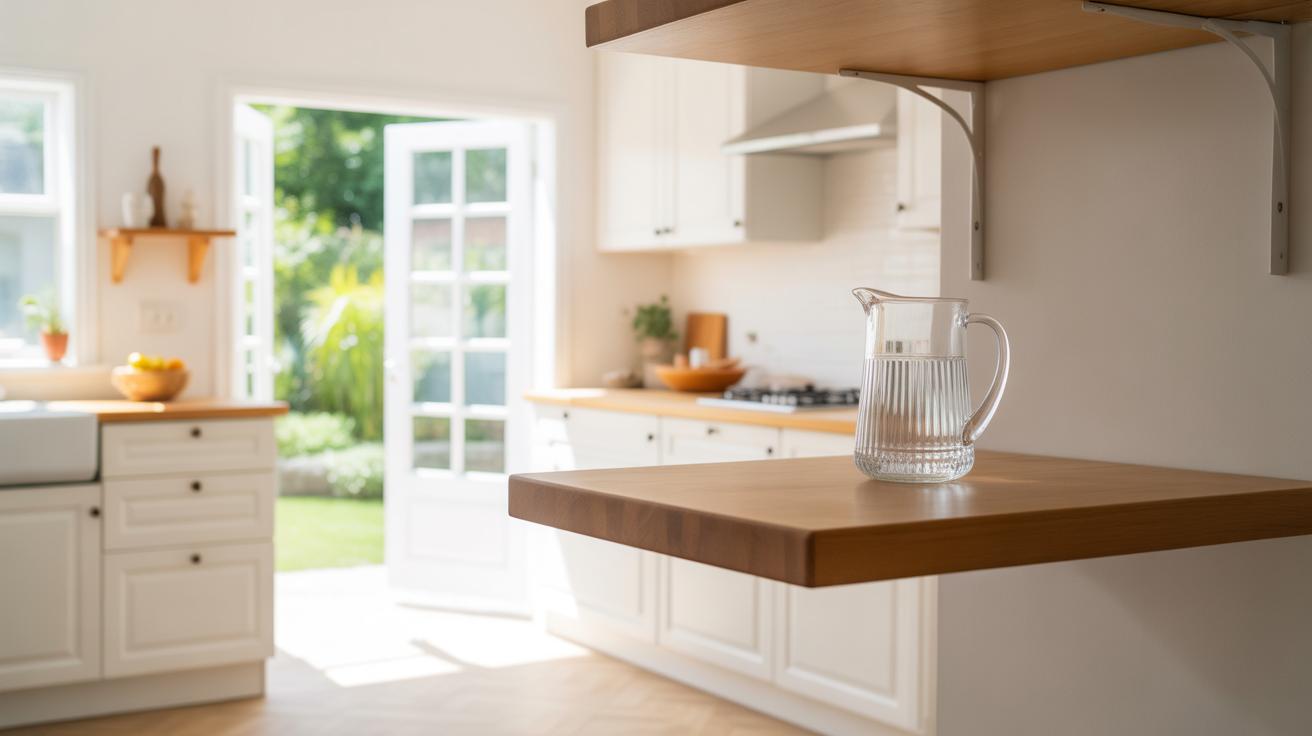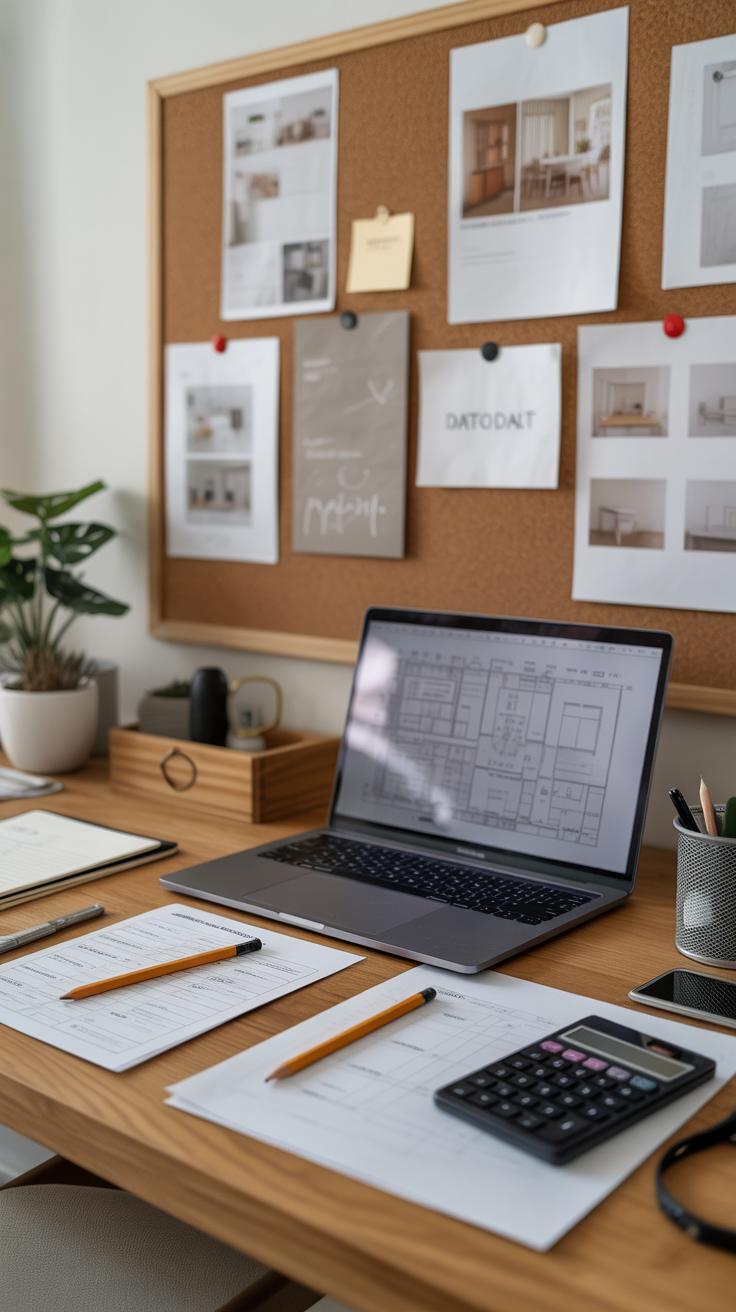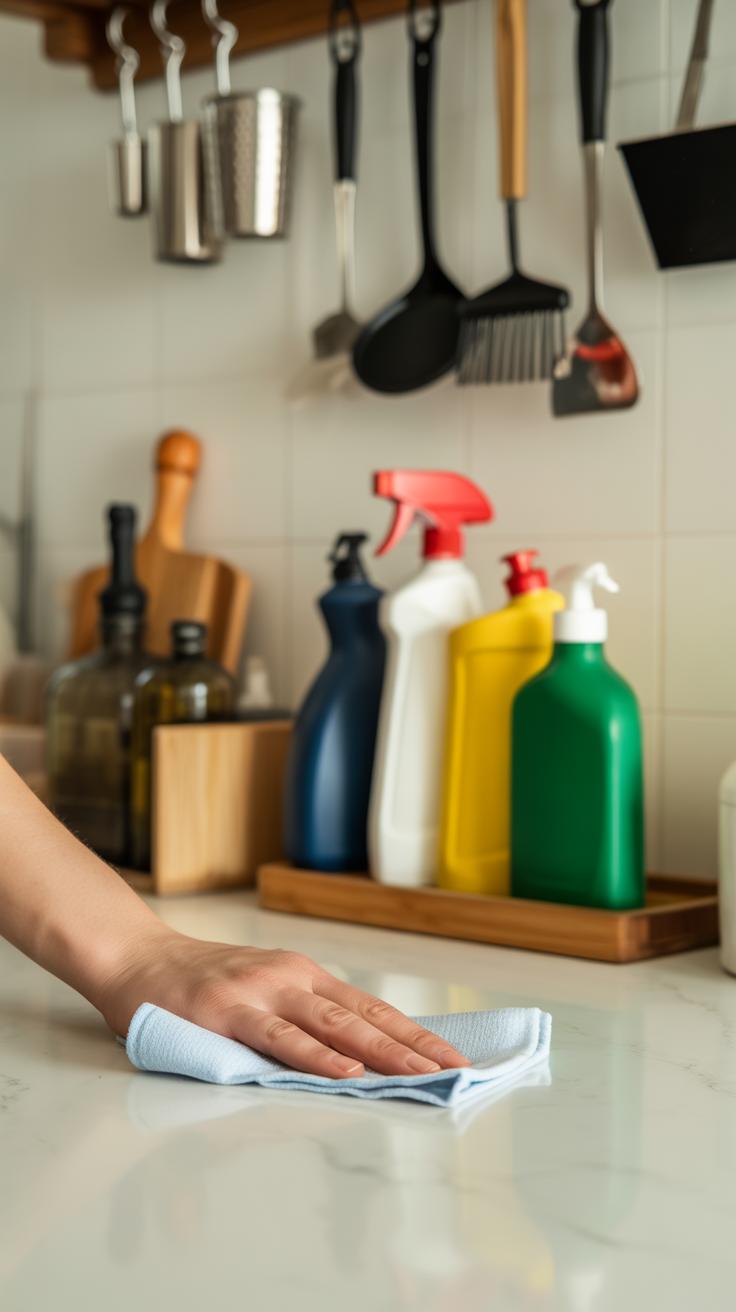Introduction
Your kitchen is often the heart of your home where family meets and friends gather. Adding a bar to your kitchen can transform it into a lively place for entertaining and casual dining. Kitchen bar design creates functional spaces that invite interaction and enjoyment for all ages.
This article explores practical and clear ideas to design kitchen bars that fit your lifestyle. From seating choices to lighting and materials, you will learn simple ways to build a welcoming spot. You will find tips on making your kitchen bar work for both small family dinners and larger social occasions.
Choosing The Right Layout For Your Kitchen Bar
Picking the right layout for your kitchen bar depends a lot on the shape and size of your kitchen, but also on how you use the space. If your kitchen feels cramped, a bulky island might not be the best idea. You might think an island is always the go-to choice, but often a straight bar along one wall can do just fine—and leave room to move around. On the other hand, if you have a spacious kitchen, an island bar can become the centerpiece, perfect for both casual meals and socializing.
There are three common layouts worth considering: peninsula, island, and straight bar. A peninsula extends from your countertop, creating a dedicated spot without needing extra floor space. Islands stand alone, offering room on all sides but needing more space. Straight bars fit neatly against walls, requiring the least room but sometimes offering less interaction.
To match layout with your kitchen, take a good look at your space. Is it narrow or wide? Square or rectangular? For a narrow kitchen, a straight bar might keep things open. In a more square or open kitchen, an island or peninsula could work to bring people together. Comfort also matters—consider how many people you want to seat, and if you’ll be standing or sitting most of the time. It’s a bit like a puzzle, trying to fit a social spot into your cooking space without it feeling crowded or awkward.
Selecting Seating That Fits Your Kitchen Bar Style
Picking the right seating for your kitchen bar can feel a bit tricky, especially when you’re trying to balance comfort with style. Your choice says a lot about how the space will be used—whether it’s relaxed family meals, quick breakfasts, or more formal entertaining. Sometimes stools alone don’t cut it, and maybe chairs with backs or even fixed benches can offer a better vibe. You want people staying comfortable but also your kitchen bar looking inviting.
Types Of Bar Seating
There’s a fair range of options for seating, each with its own pros and cons:
- Bar stools: The classic pick. They’re often backless, which keeps the look clean and saves space. But if you host long chats, they might feel a bit tough on the back.
- Chairs with backs: These add support and feel more like dining chairs. They can be bulkier, though, so consider your kitchen bar’s width.
- Fixed benches: Built-in benches can offer a cozy corner and fit snugly against walls. It’s great if you want a more permanent, integrated feel—plus, they often offer storage underneath.
- Swivel seats: Fun and functional. Swivel stools let people turn toward others easily without standing—a small thing that sometimes makes a big difference.
Each type can change the personality of your kitchen bar, but comfort is usually the throughline, no matter your style.
Tips For Seating Comfort
Comfort might sound obvious, but it’s often overlooked until guests start shifting and fidgeting. Some things to keep in mind:
- Height matters: Ideally, there should be 9 to 13 inches between the seat and the underside of the bar. Too high or too low, and elbows feel cramped or legs dangle awkwardly.
- Cushion thickness: While thicker cushions feel nice at first, they can sometimes make stools too high for your bar unless adjusted carefully. Thin cushions work well for short visits, but if you’re planning to linger, don’t go too bare.
- Spacing: Leave about 6 to 10 inches between seats so elbows don’t bump. It’s tough to chat comfortably if you’re practically sitting on each other’s laps.
Once I changed from standard stools to ones with backs and slight padding, dinner time felt less rushed and the kids actually stayed at the bar longer. If you picture your usual kitchen bar moments, what kind of seating do you think would make those times nicer?
Lighting Ideas For A Functional And Cozy Kitchen Bar
Task And Ambient Lighting
Lighting around your kitchen bar serves two main roles: helping you get things done and setting the mood. For cooking or prepping drinks, bright, focused task lighting is a must. It makes chopping veggies or mixing cocktails easier and safer. Think of it as a spotlight on your work area, eliminating shadows where spills or mistakes might hide. But the kitchen bar isn’t just a workspace—it’s a place to gather, chat, relax. That’s where ambient lighting enters, softening the whole scene with a warm, inviting glow. It’s subtle but changes everything, turning the space from purely functional to comfortably cozy. Sometimes, you want a little of both, depending on the hour or the vibe.
Lighting Fixtures To Consider
Pendant lights often steal the show in kitchen bars. They hang just right over the counter, casting pools of light exactly where you need them. You can pick styles that blend with your kitchen’s personality, from sleek modern to rustic charm. Under-bar LED strips are a smart touch, especially if you want subtle background lighting that highlights the bar’s shape without overwhelming the room. I’ve found dimmer switches to be the silent game-changers; flipping the lights down low lets you shift instantly from bright prep mode to relaxed evening ambience. For placement, try hanging pendants about 28 to 34 inches above the bar—close enough for good light, not so close they get in the way. LEDs should follow the bar’s perimeter or underneath shelves where they won’t glare but still catch the eye.
Choosing Materials That Work Well For Kitchen Bars
When picking materials for your kitchen bar, durability and ease of cleaning usually top the list. You want surfaces that handle spills, occasional knife scrapes, and energetic family gatherings without losing their charm. Some materials can feel cold or sterile, while others offer warmth but demand more care—there’s a trade-off to weigh. You might lean toward something low-maintenance because your bar sees a lot of use, but sometimes, an expensive surface might be worth it for the look you want.
Popular Countertop Materials
Quartz is a favorite because it blends toughness with low upkeep. It resists stains and scratches pretty well, and cleaning is usually just a wipe-down. On the flip side, it can look a bit uniform or artificial if you prefer natural textures.
Granite brings that classic stone appeal, each slab unique in pattern. It’s quite durable but needs periodic sealing to stay in good shape. It might not be for you if you’d rather skip ongoing maintenance.
Wood, honestly, adds warmth unmatched by stone or synthetic surfaces. But it’s prone to scratches and water damage unless you treat it carefully. I’ve seen wood bars age with character when well looked after, but they can also get stained or rough in everyday use.
Laminate is budget-friendly and comes in countless colors and patterns, but it lacks the heft of natural materials. It gets chipped or scorched more easily, yet its easy cleaning and price tag can be hard to turn down.
Materials For Bar Front And Seating
The bar front often gets overlooked, but cladding it properly ties the design together and protects against bumps and scuffs. Wood paneling works well if you want warmth and texture, but choose harder woods or treated finishes for longevity. Stone or tile offers durability and a splash of style but can feel cold.
Metal accents, like brushed steel or copper, add modern edge but might dent or scratch. For seating frames, go for hardwoods like oak or maple if you want reliability and a classic look. Metal frames offer strength and slimmer profiles but think about comfort and the noise metal furniture can make on tile floors—felt pads help.
In the end, materials have to match your lifestyle as much as your style. Think about how your kitchen bar will be used daily—and how it might look five years from now. Would you still enjoy a wood top then? Or is the easy-clean quartz better for your hectic household? Choices like these shape your bar’s character and practicality alike.
Incorporating Storage Solutions In Your Kitchen Bar
Making the most of small spaces in your kitchen bar often comes down to clever storage. One thing I’ve noticed is how built-in shelving and cabinets under the bar can transform clutter into calm. Imagine a place right beneath your countertop where you can slide in glasses, stash bottles, or tuck away utensils without the mess spreading everywhere.
These shelves don’t need to be huge—sometimes a few well-placed compartments do the trick. Cabinets with doors help keep the area looking tidy and hide less attractive items, like cocktail shakers or cleaning supplies. If you’ve got the space, open shelving works too, giving easy access and a chance to show off your favorite glasses or decanters.
Built-In Shelving And Cabinets
Under-bar storage is more than just a spot to keep things. It can actually shape how the whole bar feels. For example:
- Deep cabinets are perfect for bulky bottles and mixing tools.
- Shallow shelves might hold coffee mugs or wine glasses within reach.
- Glass-front cabinets add a sleek look while still storing everything neatly.
It’s a nice way to keep everything organized but still within easy reach—important when you’re hosting and don’t want to interrupt the flow.
Creative Storage Ideas
Now, if you want to push things a bit, consider storage that blends in or pulls out when needed. You might have hidden drawers built into the sides of the bar—great for bar mats, napkins, or even corkscrews. Pull-out racks can slide out quietly from beneath, holding bottles or extra glassware. Vertical storage might sound odd, but racks that hold wine bottles upright save space and add a touch of style.
Sometimes the trick is to think about what usually ends up cluttered on your counters and figure out a specific place for it, even if it takes extra steps to install. It feels worth it when the bar space stays neat and inviting, ready for whatever kind of gathering you’ve planned. Have you ever found something small like a pull-out spice rack completely changed how you use your kitchen bar? It’s surprising how those little ideas make a big difference.
Designing Kitchen Bars For Different Uses
When thinking about a kitchen bar, it helps to imagine how you actually want to use it. Different activities often require different layouts and features, and sometimes a simple setup won’t cover all your needs. For example, the place where you grab a quick bite might need something quite different from the spot where you spend hours chatting with friends.
Bars For Casual Dining
For quick meals or snacks, focus on surfaces that clean easily—think smooth quartz or laminate rather than textured stone that traps crumbs. You want durability and simplicity here. Seating should be comfortable but not too bulky. Stools with backs offer good support but don’t take up excessive space, which is handy for those rushed mornings.
Height matters too. A standard bar height works well if you’ll mostly be eating standing or on stools. If family members include kids, perhaps a lower counter section would help everyone feel included without scrambling for chairs.
Consider small details that make a difference—cup holders or a ledge for phones can keep things organized. Lighting should be bright enough for eating but not glaring, making the space both inviting and functional.
Bars For Social Gatherings
When your kitchen bar doubles as a social hub, encouraging conversation is key. A curved or angled counter can draw people together better than a straight line. It breaks the “serve-only” feel and invites guests to linger, chat, or even help out during meal prep.
Seating plays a big role here. You might want a mix of stools and chairs with varied heights to create a relaxed vibe — nobody feels too separate or isolated. Adding a few small side tables nearby can help hold drinks and plates if the main bar gets crowded.
Think also about integrating features like built-in wine racks, small sinks, or even hidden compartments for party essentials. These touches can keep things flowing without awkward interruptions. But maybe that sounds a bit fancy? Well, it all depends on how much hosting you actually do.
Adding Personal Touches To Your Kitchen Bar
Your kitchen bar is more than just a place to grab a snack or pour a drink. It’s a space that can show off your personality. You might wonder how to start making it feel truly yours without overcrowding or turning it into a cluttered mess.
Small decorative touches can make a big difference. Try a few potted plants—herbs like basil or mint work well and add freshness. Or maybe grab a piece of art that sparks conversation, something you actually like, not just what’s trendy. Colorful stools can brighten up the space and shift the mood, but pick something that matches your usual style—or breaks it slightly if you feel adventurous. An interesting backsplash, like textured tiles or a bold pattern, can add character without crowding the counters.
Functionality matters, too. Those little things that make life easier often get overlooked. Think about adding a discreet charging station for phones and tablets. You’ve probably needed one, right? Or maybe build in shelves for your favorite cookbooks or mugs you always reach for. Hooks can be a simple fix to keep keys or kitchen towels handy, so you avoid misplacing them when busy. These small adjustments can make your kitchen bar feel personal and practical at the same time.
It’s really about what fits your daily habits. What might work great for one person may feel unnecessary for another. So, you could try some ideas, live with them for a bit, then tweak as you go. Does that make sense? Personalizing isn’t about perfection—it’s about creating a space that, well, fits your life.
Budgeting Your Kitchen Bar Project
Planning a budget for your kitchen bar can feel a bit overwhelming. You might wonder where your money should go first and how to keep costs from sneaking up on you. Start by listing the essentials—this often includes materials for the counter, seating, lighting, and labor.
To give you a rough idea, materials like wood or laminate for the bar surface might cost anywhere from $500 to $3,000 depending on quality and size. Seating can range from $50 for basic stools up to $300 or more for designer options. Lighting varies widely, but budgeting at least $200 to $600 for fixtures and installation isn’t unusual. Labor costs depend on where you live, but expect around $40 to $70 per hour if you hire professionals.
What really helped me was prioritizing. I chose to invest in sturdy seating and simple, effective lighting, while opting for a budget-friendly countertop. It’s tempting to go for flashy materials, but not everything needs to be premium. Thinking about what you use most can steer decisions.
Some quick tips to save money:
- Pick multi-use furniture—stools that tuck away or flip seats save space and dollars.
- Watch out for sales or clearance on lighting and fixtures; sometimes, a small design tweak lets you grab a bargain.
- Consider doing minor installs yourself, like screw-in lighting or assembling stools—just make sure it’s safe.
- Reuse or refresh existing furniture with paint or cushions instead of buying new.
It’s worth asking: where would you prefer to splurge? Maybe splurging on quality seating pays off more than an ultra-fancy countertop. Balancing needs with wants usually shapes the final budget more than initial plans do.
Maintaining Your Kitchen Bar For Longevity
Cleaning And Upkeep
Keeping your kitchen bar looking good isn’t just about wiping it down on occasion. Daily care can make a real difference. For wooden surfaces, dust and wipe gently with a damp cloth, avoiding too much water that might warp the wood. For stone or quartz tops, mild soap and water usually work fine, but don’t skip drying afterward to prevent streaks or water spots. Metal fixtures need a soft cloth to avoid scratches—sometimes a specific polish helps to keep that shine. Seating materials vary too: fabric chairs benefit from a quick vacuum or lint roller, while leather or faux leather calls for occasional conditioning or wipe-downs with gentle cleaners. Weekly, you might want to go a bit deeper—check corners where crumbs hide or spots might develop. Honestly, at first, this routine can feel like a chore, but once it becomes habit, your bar will show it.
Preventing Damage
Think about how you use the space and protect it with simple habits. Coasters, for example, do more than catch condensation; they stop tiny rings or stains that become stubborn over time. Heavy pots or awkwardly placed objects? Try to set them down gently or on a protective pad—that’s saved me a few scratches I probably would have ignored otherwise. Heat can be sneaky too; placing hot dishes directly on your bar surface is tempting but risky, even if the material seems tough. Using trivets or heat pads can avoid that patchy discoloration or warping. And yeah, it’s a bit of extra effort, but what’s a kitchen bar if it doesn’t last through years of gatherings? Would you rather scrub out a stain or just reach for a coaster?
Conclusions
Kitchen bars offer a mix of comfort and style that enhances the cooking and dining experience. Whether you prefer modern or classic looks, shaping the space for easy use is key. Thoughtful design supports smooth conversations, dining, and cooking all in one spot.
By considering key elements like seating, storage, and lighting, you create a kitchen bar that welcomes everyone. Use these design ideas to shape your kitchen as a favorite gathering area. Your kitchen bar can become a simple, useful space that brings joy to your daily routine.


